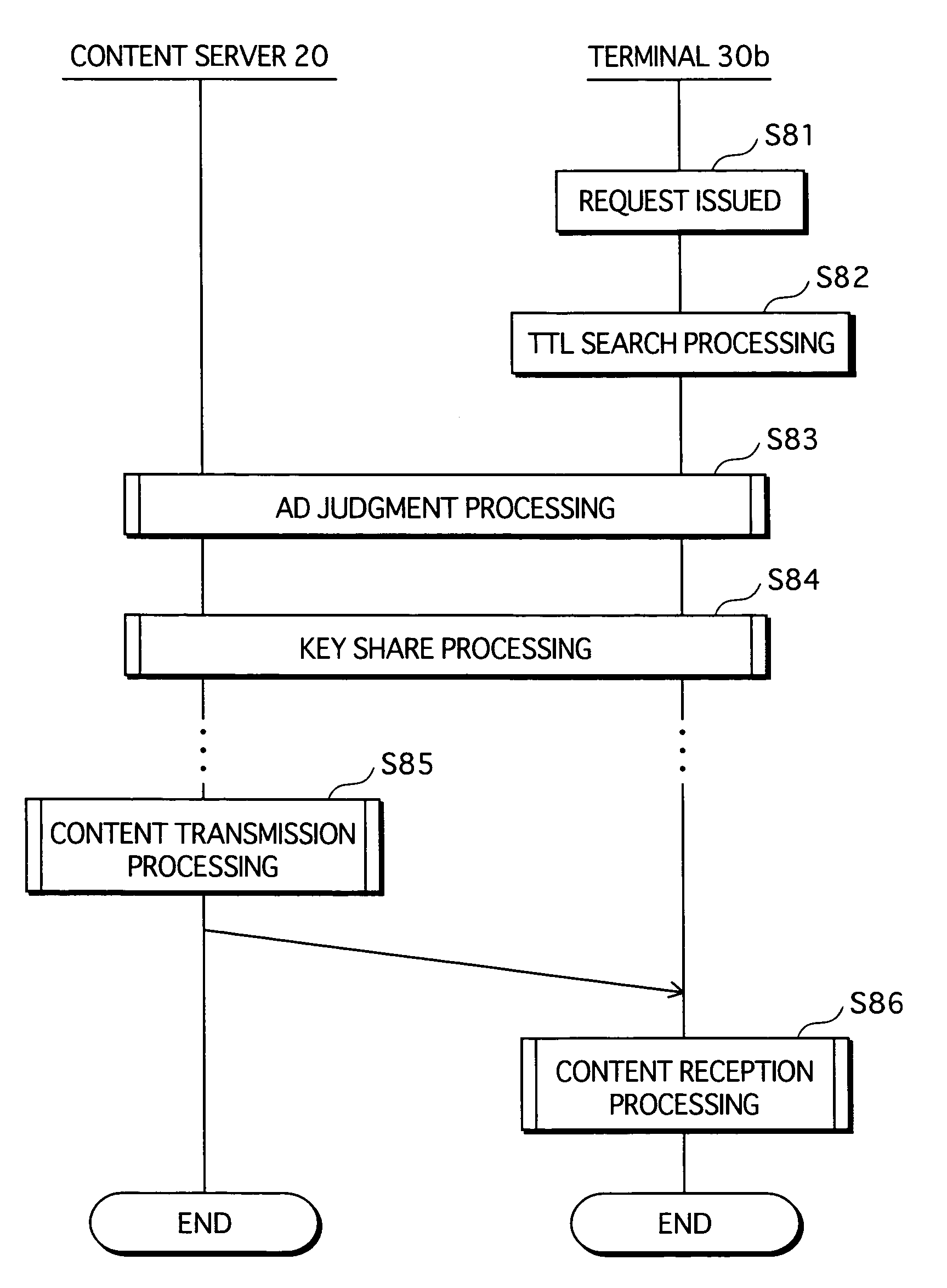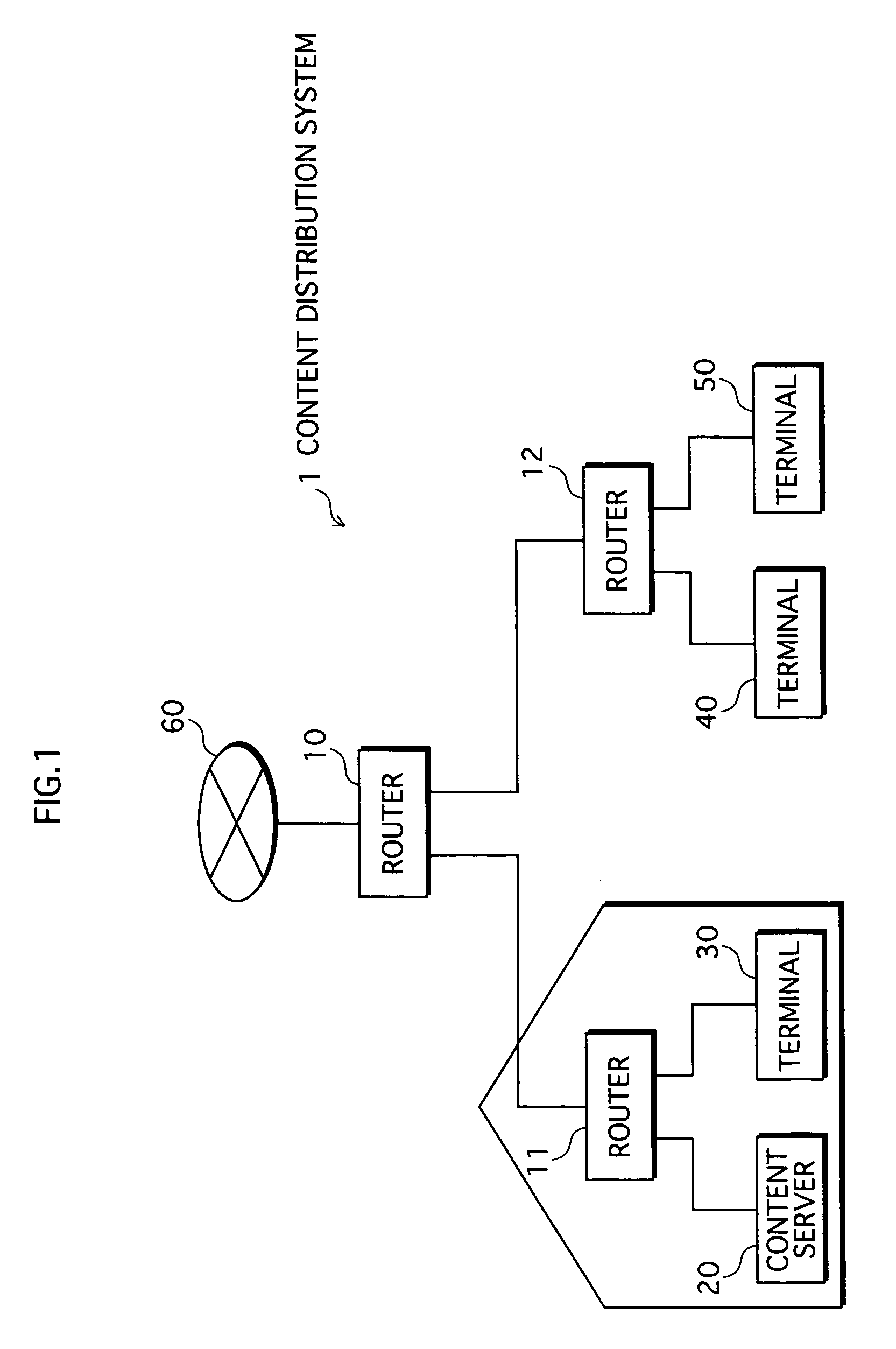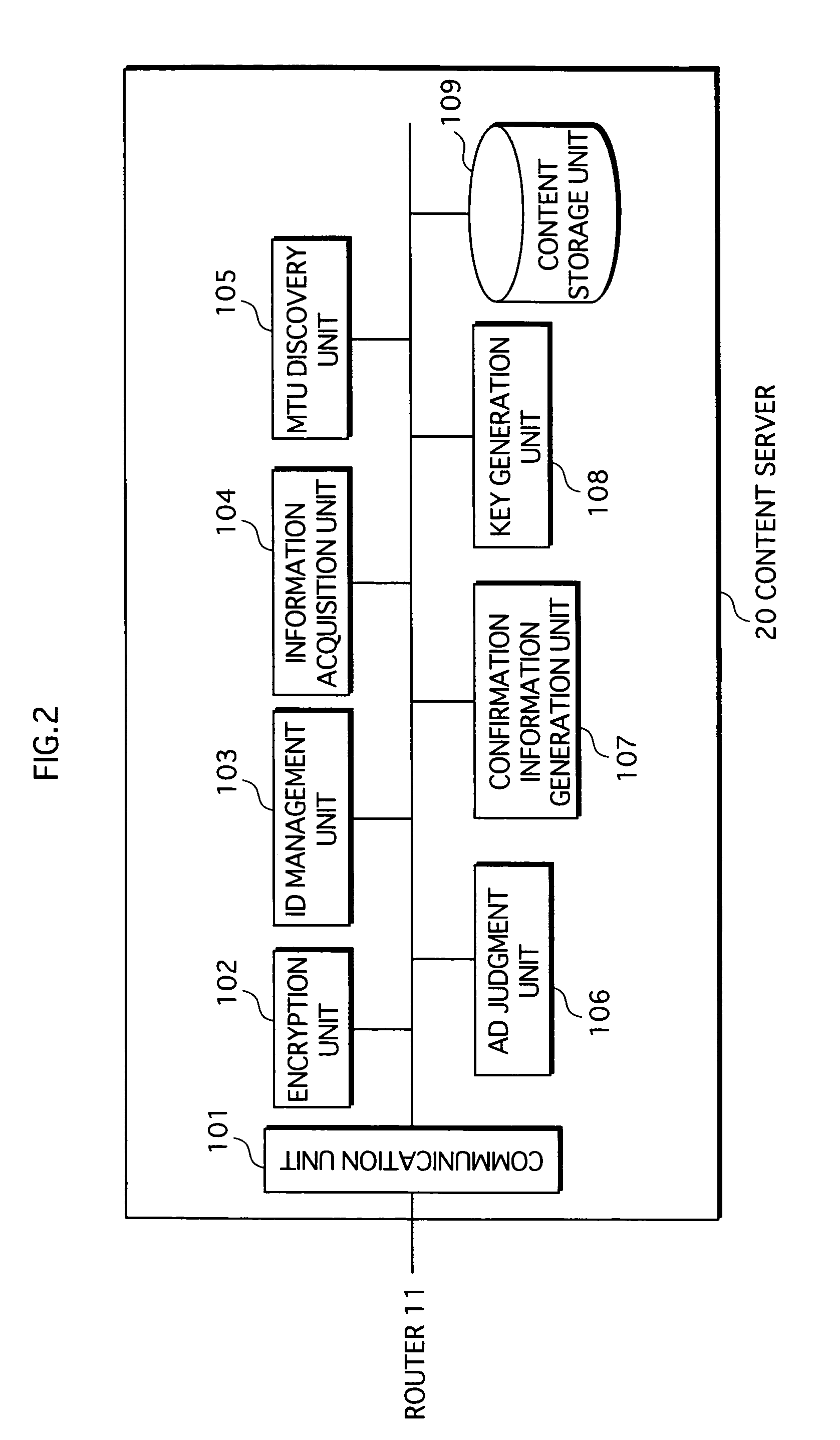Content distribution system
a content distribution and content technology, applied in the field of content distribution technology, can solve the problems of high risk of contents being stolen by a third party, unrestricted distribution of contents, copyright protection,
- Summary
- Abstract
- Description
- Claims
- Application Information
AI Technical Summary
Benefits of technology
Problems solved by technology
Method used
Image
Examples
embodiment 1
[0064]A content distribution system 1 will now be described as an embodiment 1 of the present invention, with reference to the drawings. In content distribution system 1 (hereinafter “system 1”), contents are transferred between devices within a permitted range of content usage. This range is referred to below as an authorized domain (“AD”). Here, the authorized domain is envisaged, in particular, to be a home network in which devices in a home environment are connected to one another.
Structure
[0065]FIG. 1 shows a structure of system 1. As shown FIG. 1, system 1 is constituted from routers 10, 11 and 12, a content server 20, and terminals 30, 40 and 50.
[0066]Routers 11 and 12 are connected to router 10, which is in turn connected to the Internet 60. Router 11 is a relay device within the authorized domain (i.e. an “in-AD” relay device), while router 12 is a relay device external to the authorized domain (i.e. an “out-AD” relay device). Content server 20 and terminal 30 are connected...
embodiment 2
[0249]A content distribution system 2 is described below as an embodiment 2 of the present invention, with reference to the drawings. As with system 1, content distribution system 2 (hereinafter “system 2”) uses the TTL in packets transmitted from terminals to judge whether the terminals are in-AD terminals. However, in comparison with system 1, in which the server and in-AD terminals share keys, system 2 is structured such that the server registers in-AD terminals in a group.
[0250]Devices in system 2 communicate using IPv4 as a communication protocol.
Structure
[0251]FIG. 23 shows a structure of system 2. System 2 is constituted from routers 10, 11 and 12, a content server 20a, and terminals 30, 40 and 50. Since the routers and terminals in system 2 have the same structure and function as those in system 1 (FIG. 1) marked by the same reference signs, description is omitted here. The following description relates to content server 20a, whose function differs from system 1.
[0252]FIG. 2...
PUM
 Login to View More
Login to View More Abstract
Description
Claims
Application Information
 Login to View More
Login to View More - R&D
- Intellectual Property
- Life Sciences
- Materials
- Tech Scout
- Unparalleled Data Quality
- Higher Quality Content
- 60% Fewer Hallucinations
Browse by: Latest US Patents, China's latest patents, Technical Efficacy Thesaurus, Application Domain, Technology Topic, Popular Technical Reports.
© 2025 PatSnap. All rights reserved.Legal|Privacy policy|Modern Slavery Act Transparency Statement|Sitemap|About US| Contact US: help@patsnap.com



